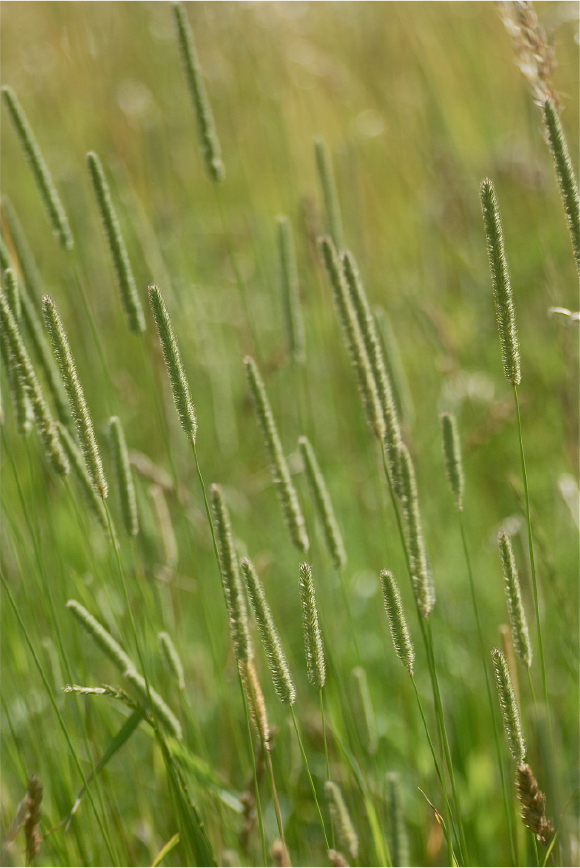Are Small Square Horse Hay Bales Becoming An Artisanal Product?
By Nikki Alvin-Smith
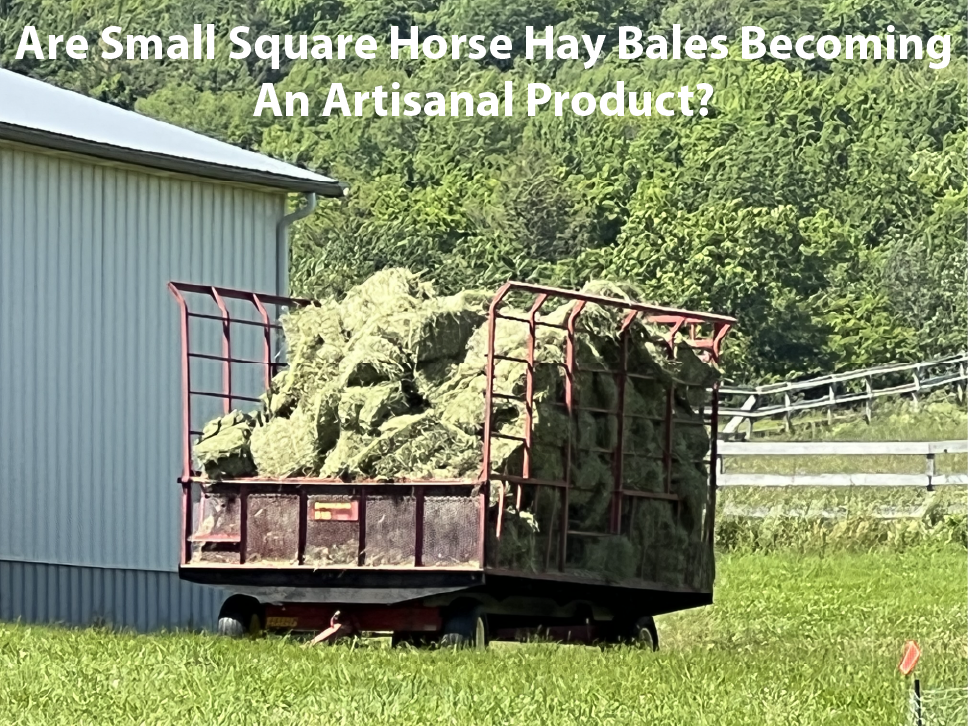
The word artisanal is defined as,
“Creating a product in limited quantities by traditional methods.”
In today’s farming world, the dry hay business is relatively low income producing when compared to grains and other products which directly translates to dry hay production continuing to be on the decline. In fact, according to the USDA the dry hay total production across the USA in 2022 is the lowest it has been in 115 years.
The decline in both hay production, and in the quality of hay that is produced for equine consumption, marks a watershed moment in forage production for horses.
The development of ‘hands free’ and thus labor-saving machinery that can harvest hay without the need for backbreaking labor, together with the availability of chemical based dry down agents and preservatives, means much money can be saved in fuel, wear and tear on equipment and its operators, labor, and insurance when large, cumbersome bales are produced.
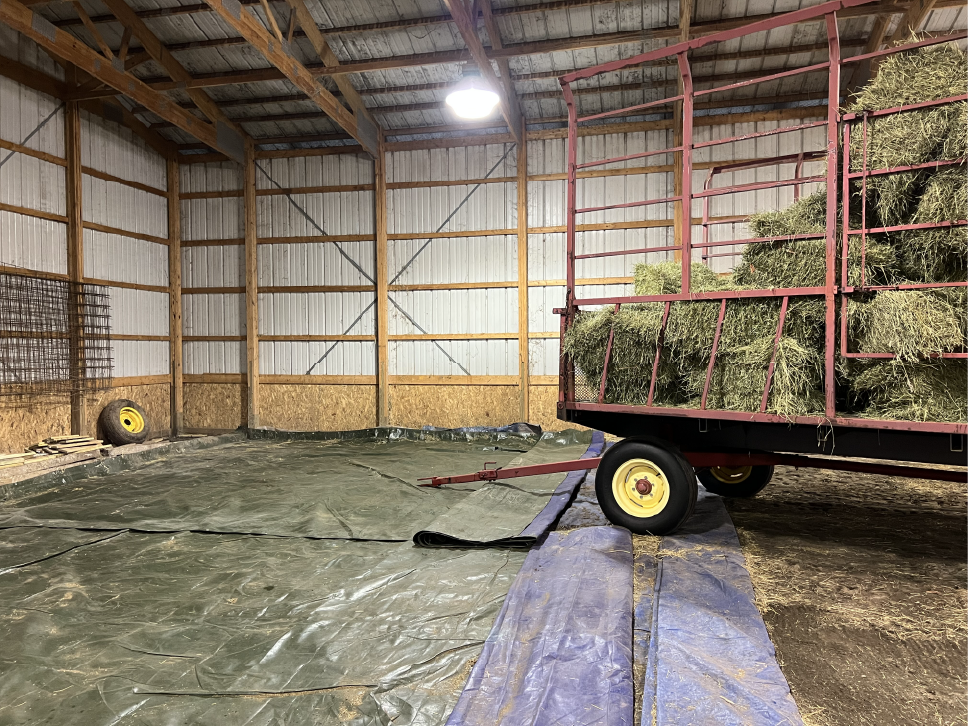
The problem is, while horse ownership and the horse population in the USA continues to increase, the number of facilities that can afford the significant investment in equipment needed to move these massive bales are few and far between. The stabled horse is rarely located in a large machine shed, housed in large herds like cows with wide tractor friendly concrete aisleways where heavy equipment is easy to maneuver, and walls are slatted and ventilated.
While there are hay dealers that buy the large rounds and squares cheaply in one area and spend the money to transport them to more horse centric neighborhoods where they factory transform these large bales to small squares for more revenue per ton, the vast majority of hay that is baled one-way stays baled that way through to delivery to the horse caregiver’s facility.
The reality is that many farmers today wouldn’t know if a hay windrow was cured enough to be safe to bale for horses without the help of a piece of equipment to give them an average moisture content after application of a preservative of some sort. Top quality haymaking is in danger of becoming a dying art.
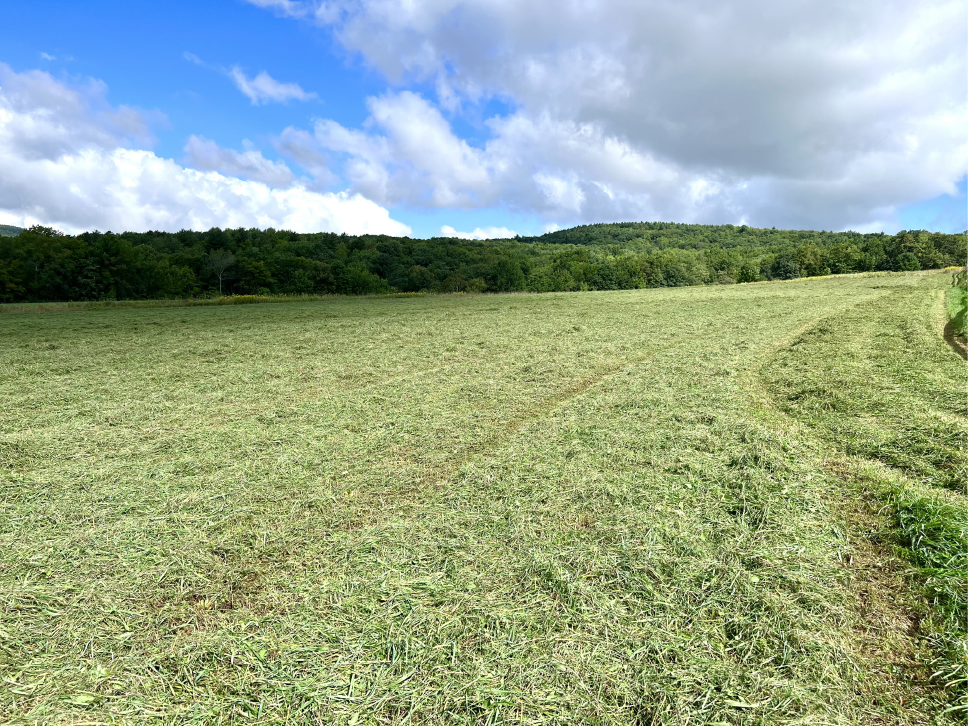
Artisanal hay that is grown organically without the use of chemical fertilizers but nutrient fed by organic manure and cured the old-fashioned way utilizing Mother Nature is fast becoming a thing of the past.
For the stabled horse, hay must be double handled somewhere. If you’ve ever tried to work with a large round or even a small round bale in a regular stable setting, then you can attest to the mess and waste it creates throughout the barn and the sincere difficulty that breaking rounds or large squares into flakes or portions of forage creates. It is a nightmare.
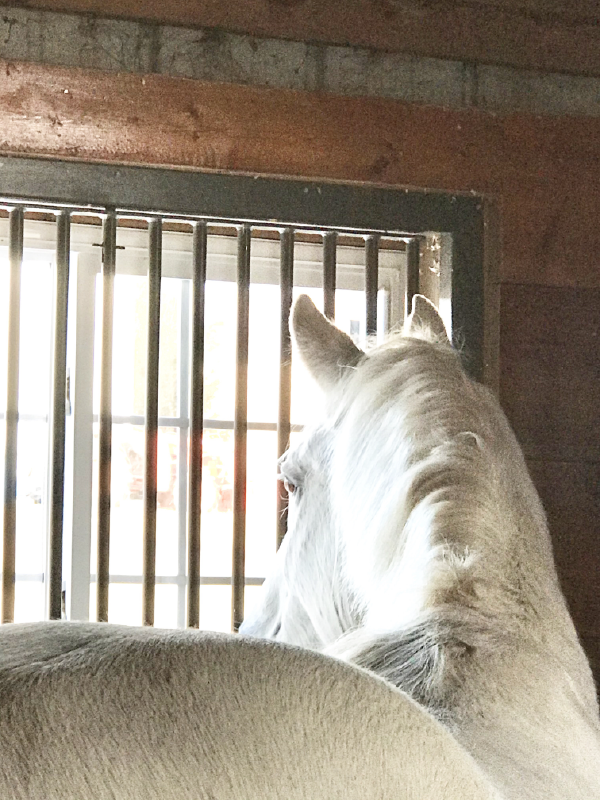
Add to this the fire risk, the lack of safe “stackability” of the round bales: the lack of human ‘hands on’ inspection that comes as part of picking up a two string bale and moving it off a hay wagon from the field that helps mitigate the risk of contamination of the hay with botulism caused by harvested dead wildlife; and the higher likelihood of the presence of nefarious foreign objects in the larger bales, and you can easily understand that the traditional smaller square bale comes with several advantages.
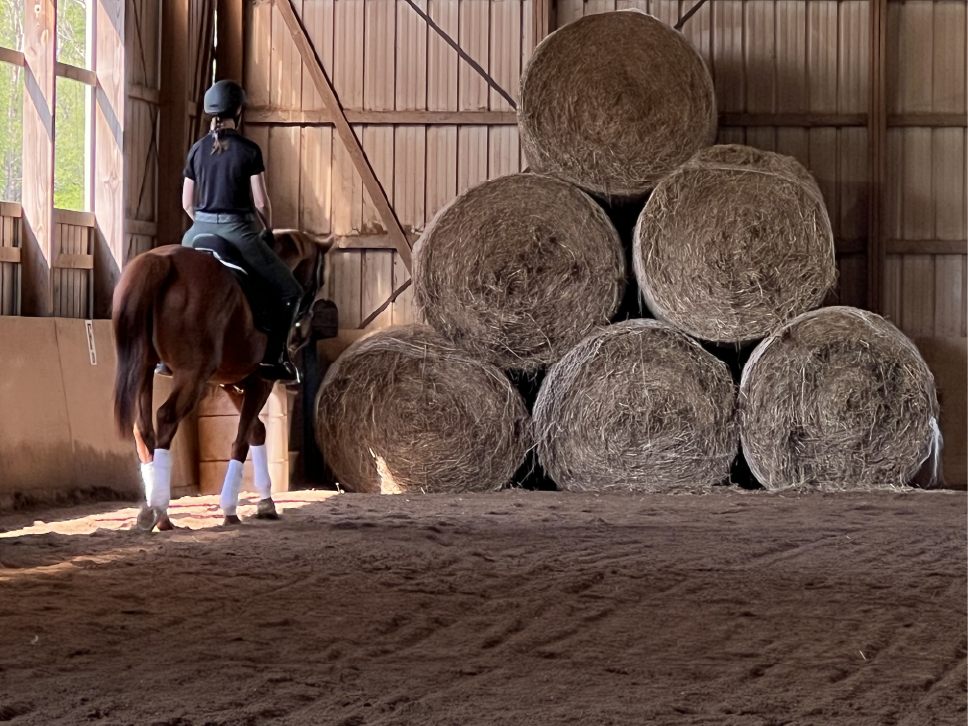
Hay steamers and certain treatment options to minimize the chance of ingestion of mold or allergy producing grass spores by the performance horse are not sized or adaptable for use with large bales.
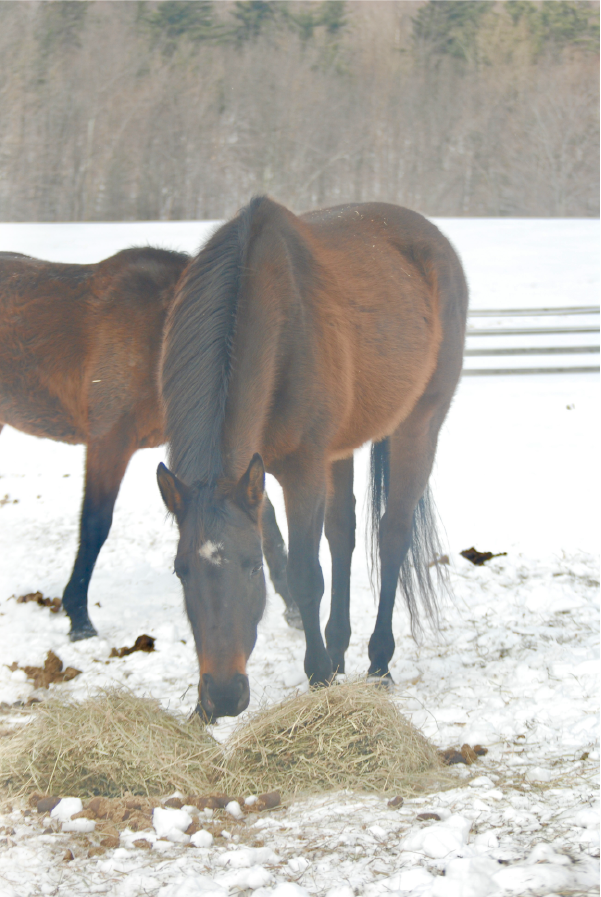 Horses with halters caught in equine hayfeeders can easily become injured and string left on bales quickly become the latest rope burn injury when left in the pasture. These issues can easily be avoided with due diligence by removing halters for turnout, using hayfeeders designed for horses not cows, and removing twine from round and square bales. But using these large bales outside is one thing, using them inside quite another.
Horses with halters caught in equine hayfeeders can easily become injured and string left on bales quickly become the latest rope burn injury when left in the pasture. These issues can easily be avoided with due diligence by removing halters for turnout, using hayfeeders designed for horses not cows, and removing twine from round and square bales. But using these large bales outside is one thing, using them inside quite another.
Double or triple handling of the hay is necessary, even if your hay loft is no longer useful for storage and you can afford a new building for storage of the larger bales.
Your local hay farmer who has been providing good quality small squares off his defunct dairy farm just because he has the leftover equipment from days gone by is not likely to go spend the $100,000 plus on a new round baler. The risk of fire with the use of large balers is very high when working in the field and there are many quirks yet to be worked out in certain manufactured round balers particularly. When that valuable and experienced hay producer retires, there is no one coming along behind.
Add to this equation the increasing pressure on open land due to the newly heralded New England climate haven and the ubiquitous buying up by Silicon Valley corporations of the Albany and Upstate New York regions, both in open land and in housing that is languishing in suburban and rural neighborhoods.
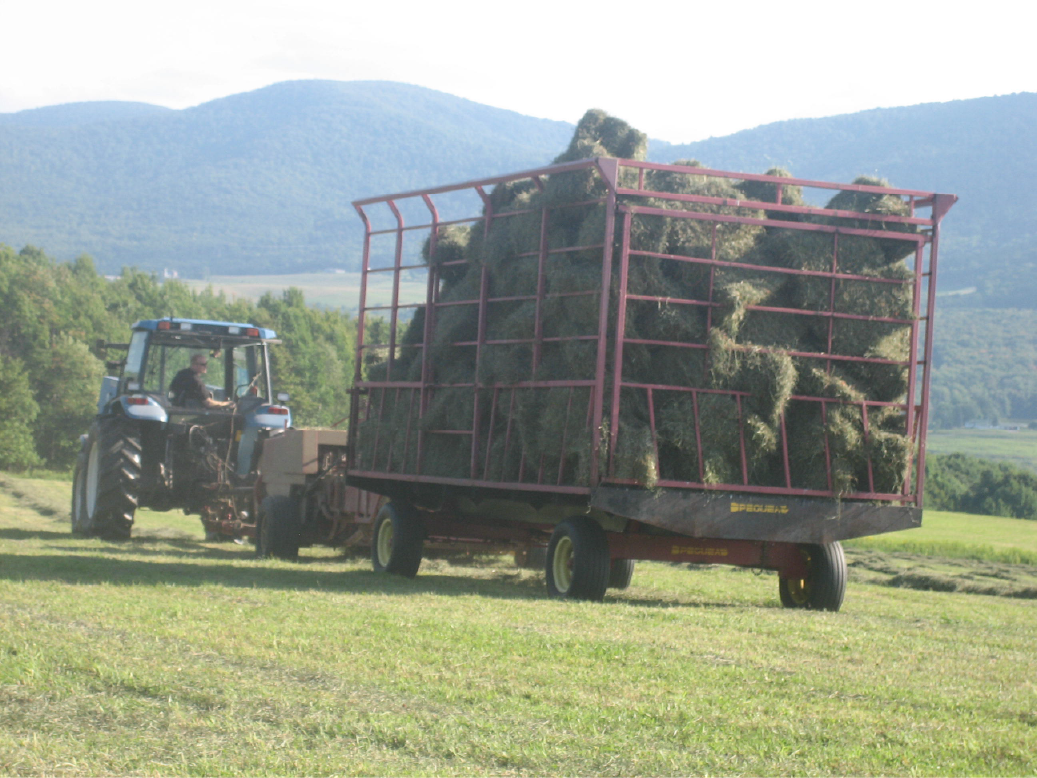
The market forces of supply and demand are in full force. The small square hay bale of horse quality forage, or at least those of top ‘clean and green’ quality is quickly becoming artisanal in price. Hay that is harvested from professionally seeded hayfields versus overgrown grass fields of questionable forage provenance, where soil is nurtured and weeds organically managed with the knowledge, know-how of a horse expert producing hay for equines will continue to rise in price.
Keeping equipment well maintained, crop losses due to drought or excessive rain, higher than ever insurance and labor costs and lack of labor available all contribute to the business of making hay while the sun shines a more arduous and expensive task than ever before.
If you don’t want your hay farmer resource to plow under the hay crop for grain, sell up their properties for development at the incredibly high prices per acre that continue to increase and generally appreciate their efforts then you’d better patronize their businesses. Because if you don’t, the small square bale will be something you see at a local museum event or ‘farm days’ alongside the team of draft horses
